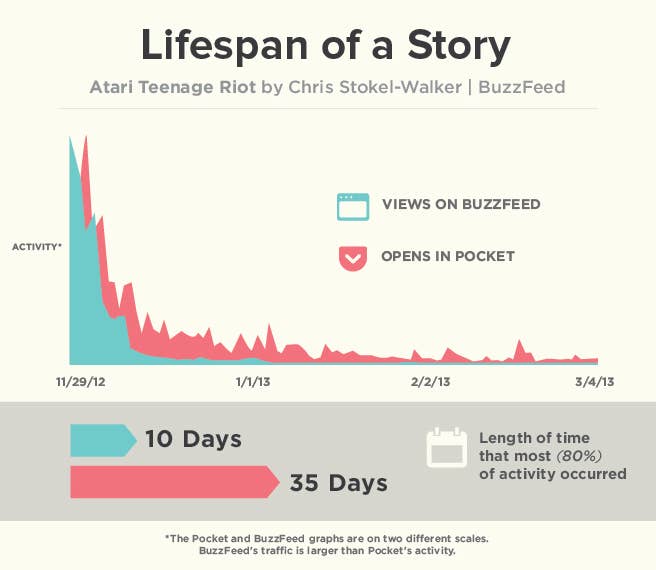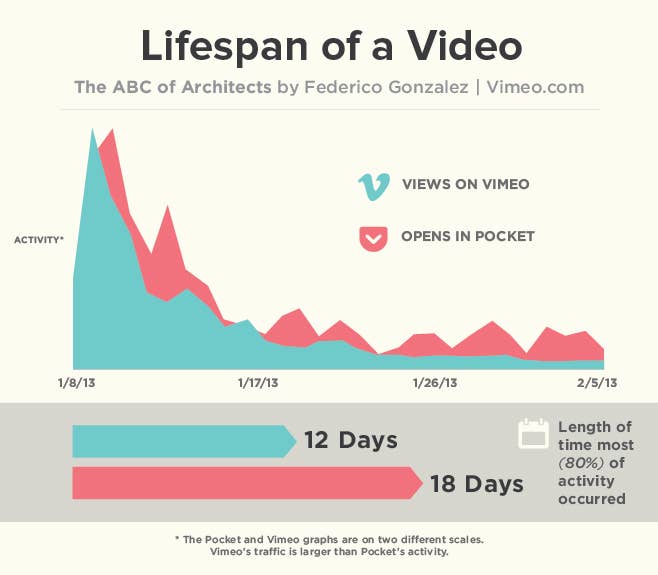
"Read later" service Pocket ran the numbers on this longform story, published on BuzzFeed in November of last year. It's an interesting peek at how people TiVo text: most read the story fairly quickly, with a significant percentage of read-later views coming in the first few weeks; the initial fall-off is steep, suggesting that some people put stories in read-later apps because it's just nicer to view them there, on a phone or a tablet and without ads or formatting.
Yet there's significant reading activity for over a month (though the readership scales, as noted in the graph, are different — likely vastly so). In other words, in an essential way, a story that gets a lot of saves to Pocket or Instapaper lives for quite a bit longer. It's worth noting, however, that the definition of "lives" is a complicated one — every late read corresponds with an initial visit to the story online, meaning that this long, slow accumulation of "reads" is largely hidden from publishers.
There are similar patterns for video:

These stats also hint at a sort of Nielsen/TiVo issue for online media: Content is getting viewed in a lot of different ways, but some of them — Pocket, Instapaper, Readability — aren't fully reflected in their stats. A single three-second view to a story could be either a completely uninterested reader or one of your most interested readers, just stopping by to save the story for later perusal.
AllThingsD's Peter Kafka tweets, "I [read later] all the time but would love to see actual #s to see how my behavior tracks w/real world. wouldn't you?" Indeed I would — this is still, as Kafka suggests, likely a niche behavior.
